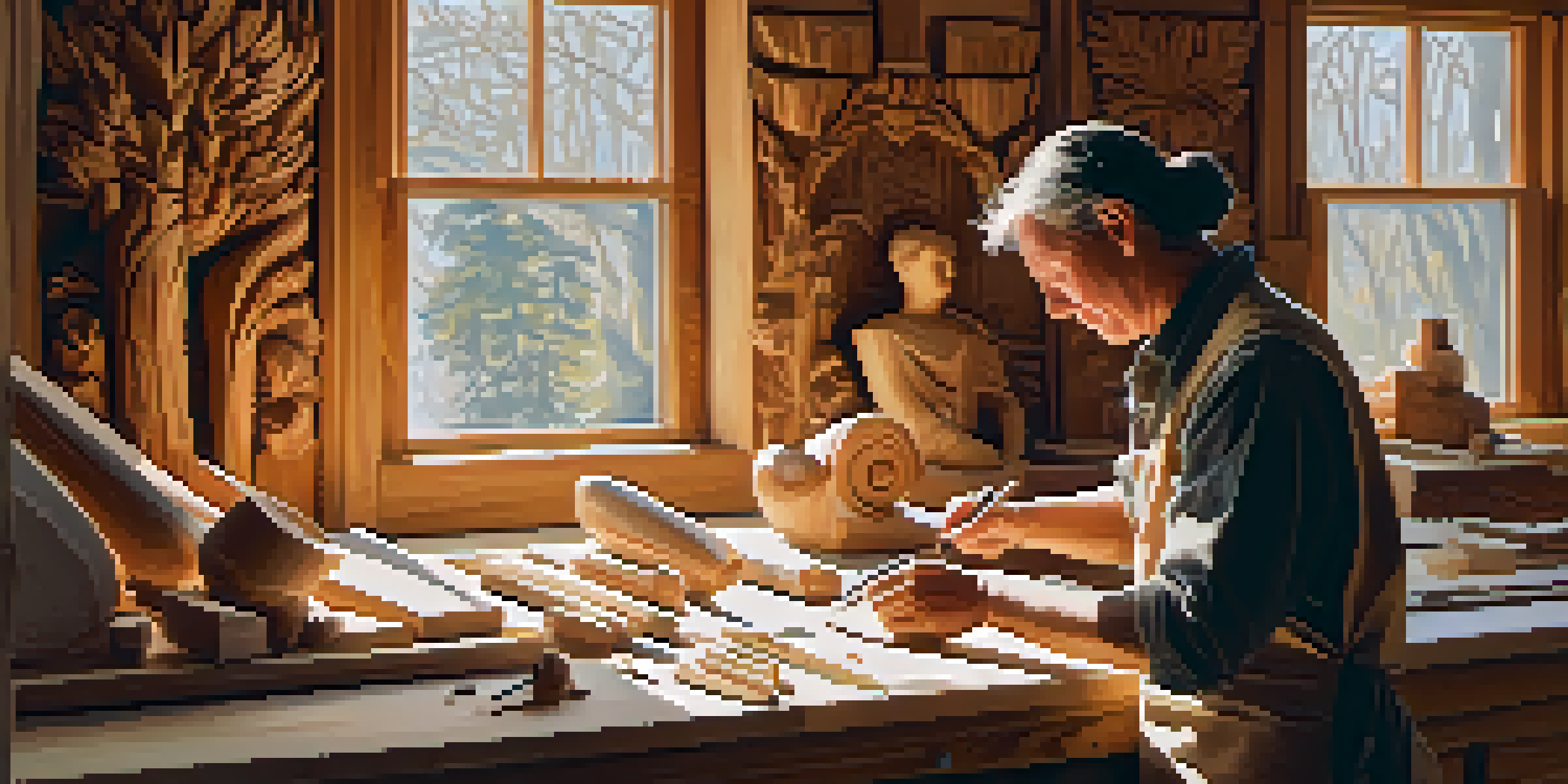Understanding the Judging Criteria in Carving Contests

Introduction to Carving Contests and Judging Criteria
Carving contests are a thrilling way for artists to showcase their skills, creativity, and passion. Whether it's wood, ice, or pumpkin carving, each medium has its own unique challenges. Understanding the judging criteria is crucial for contestants aiming to impress the judges and audience alike.
Art is not freedom from discipline, but disciplined freedom.
Judges look for various factors that contribute to the overall success of a carving. These criteria can include technical skill, creativity, and presentation. By grasping these elements, participants can better prepare their work to meet or exceed expectations.
In this article, we will delve into the specific judging criteria used in carving contests, helping both novice and experienced carvers understand what judges are really looking for. This knowledge can make a significant difference in the outcome of a contest.
Technical Skill: The Foundation of Carving Success
Technical skill is often the first criterion judges consider when evaluating a carving. This includes the precision of cuts, the smoothness of surfaces, and the overall craftsmanship. A well-executed carving demonstrates an artist's familiarity with their tools and techniques.

For example, in wood carving, judges will assess how well the artist has handled chisels and knives. Clean lines and intricate details can set a piece apart from others that may appear rough or unfinished. Judges appreciate the effort that goes into mastering these skills.
Technical Skill is Crucial
Judges prioritize the precision and craftsmanship demonstrated in a carving, making technical skill foundational to success.
Ultimately, technical skill lays the groundwork for a successful carving. Without it, even the most creative concept might fall flat, underscoring the importance of practice and dedication in honing one's craft.
Creativity: The Heart and Soul of Carving
Creativity is what transforms a simple carving into a remarkable piece of art. Judges seek originality and imaginative concepts that captivate the viewer's attention. A unique idea can elevate a carving, making it memorable and impactful.
Creativity takes courage.
Consider a pumpkin carving competition where many participants choose traditional designs like faces or spooky themes. A contestant who carves an intricate scene or a clever twist on a classic idea might stand out significantly. This is where creativity plays a vital role in the judging process.
In carving, creativity is not just about the idea; it also involves how effectively the artist brings that idea to life. A well-executed creative concept can resonate with judges, leaving a lasting impression and potentially leading to higher scores.
Presentation: Making a Lasting Impression
Presentation is the final touch that can sway judges' opinions during a carving contest. This encompasses everything from the overall arrangement of the piece to its cleanliness and how it’s displayed. A polished presentation can greatly enhance the perceived value of a carving.
Imagine walking into a contest where one artist presents their carving on a beautifully decorated stand while another simply places theirs on a table. The first artist’s effort to create an inviting display can make their work more appealing and engaging to both judges and spectators.
Creativity Captivates Judges
Original and imaginative concepts can elevate a carving, making it stand out in a competitive environment.
In carving contests, first impressions matter. A well-presented piece can draw in viewers and judges alike, making them more inclined to appreciate the talent and effort behind the work. Thus, attention to presentation is essential for any serious contestant.
Judging Criteria: Specifics to Look For
While technical skill, creativity, and presentation are key components, judges often have specific criteria they use to score each carving. These can include the complexity of the design, the use of color, and the thematic consistency of the piece. Each element contributes to the overall impression.
For instance, in ice carving contests, judges may look for factors like the transparency and clarity of the ice, which can enhance the beauty of the final product. Carvers who can incorporate these specifics into their work are more likely to impress the judges.
Understanding these specifics helps contestants align their work with what judges are looking for, allowing them to focus on the elements that will earn them the best scores. This targeted approach can make a significant difference in a competitive environment.
Feedback: Learning from Judges’ Insights
Feedback from judges can be invaluable for artists looking to improve their carving skills. Many contests provide written or verbal critiques that highlight both strengths and areas for growth. Embracing this feedback is essential for any dedicated carver.
For example, if a judge points out that a carving lacks detail or creativity, the artist can take this advice to heart and work on those aspects in future projects. Constructive criticism can help carve a clearer path toward improvement and mastery of the craft.
Presentation Enhances Appeal
A polished presentation significantly influences judges' perceptions and can make a carving more engaging and memorable.
Moreover, feedback fosters a sense of community among contestants, encouraging them to learn from one another. This collaborative spirit can lead to a richer, more inspiring carving experience for everyone involved.
The Role of Judges: Experts in the Field
Judges in carving contests are often experienced professionals who have honed their skills over many years. Their expertise allows them to evaluate the nuances of each piece with a discerning eye. Understanding their perspective can help contestants better prepare their work.
These judges are not just looking for technical proficiency; they also appreciate the passion and dedication that artists pour into their carvings. Knowing that judges value both skill and creativity can motivate contestants to push their boundaries and explore new ideas.

In essence, judges serve as mentors in the carving community, guiding artists toward excellence. Their insights and evaluations can inspire contestants to elevate their craft and strive for greatness in every competition.
Conclusion: Mastering the Art of Carving Contests
Navigating the world of carving contests can be both exciting and challenging. By understanding the judging criteria—technical skill, creativity, presentation, and specific details—artists can enhance their chances of success. Preparation and awareness are key components to thriving in competitive environments.
As contestants embrace feedback and learn from experienced judges, they can continuously improve their skills and artistry. This growth not only elevates their individual work but also contributes positively to the carving community as a whole.
Ultimately, carving contests are about more than just winning; they are opportunities for artistic expression and connection. By mastering the judging criteria, artists can showcase their unique talents and passion for carving, creating memorable pieces that resonate with both judges and audiences alike.